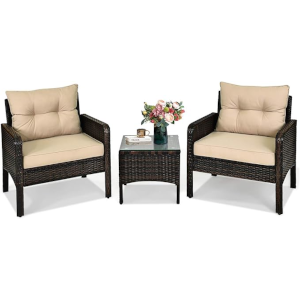In part three of the Sleep Apnea series, I’m discussing the various treatments that are available for people living with sleep apnea.
Laugh and the world laughs with you. Snore and you sleep alone.
Anthony burgess
I wear a CPAP mask each night when I’m sleeping, but it’s not the only treatment available for OSA (Obstructive Sleep Apnea). I’ve spoken to a number of people who have had a very difficult time getting accustomed to sleeping with a CPAP mask. Some, even after a year of two, have never adjusted and been able to sleep, even relatively well, with the mask on.
The first two treatment options you will most likely be told about: CPAP machine and oral appliances.
The CPAP machine option may be difficult to get used to. There are different types of machines that provide different pressures – continuous pressure (same pressure all night long), auto-adjusting pressure (increases pressure when device notices your breathing is slowing down or have stopped breathing), positive pressure (more pressure when breathing in, less when breathing out). When you go to your local CPAP store you’ll see that there are many mask options to choose from. There are two main categories of masks: over your nose, and over your mouth and nose, depending on how you breathe while sleeping. If you are lucky like me, you will find one that works and find that your sleep, most nights, is improved.


Complications with this treatment include chronic bronchitis and bacterial infection from your mask and hose, skin irritation, tempomandibular joint issues, due to the mask pressure on your jaw or you cannot sleep with the mask on
The oral appliance option keeps your tongue from sliding to the back of your throat in order to prevent the air passage from getting blocked. A second appliance keeps your jaw from sliding back and blocking your airway. These options may cause changes to your teeth/jaw. Always consult with your dentist to see if this is a good option for you.
Surgical Treatments for Sleep Apnea
There are many surgical options out there, but each one brings with it a risk, as with any surgical procedure. Some of these risks include infection, development of Central Sleep Apnea (CSA) or OSA recurring, fever, pain, bleeding, snoring, temporary numbness, damage to the tongue.
- Uvulopalatopharyngoplasty surgery: this treatment removes tissue from the back of your throat in an effort to open the air passage and make breathing easier. This is not a foolproof procedure, as sleep apnea episodes/snoring may return in time.
- Maxillomandibular advancement (MMA): is a surgical procedure that moves the position of the jaw forward to keep the airway open permanently. The con with this treatment is the change in appearance that results from moving the jaw forward.
- Tracheostomy: This is considered a final treatment option. As a treatment, it is successful, however, there are many possible complications, including infection, voice issues, and development of Central Sleep Apnea which is why it is considered last effort treatment, when all other treatments have failed.
- Tonsillectomy: Removing the extra tissue at the back of the throat, like the tonsils, may help to make the airway passage larger and clear the way for easier breathing. One of the complications is that tissue may grow back over time.
- Nasal septum or nasal polyp surgery: A deviated septum or nasal polyps can make breathing through your nose difficult. A deviated septum means that the wall in the middle of your nose is further to one side making one nasal passage smaller that the other and making breathing more difficult. One of the complications of this surgery is that nasal polyps can regrow over time and the correction of the septum may not relieve your sleep apnea .
- Hypoglossal nerve stimulation: This is a fairly new treatment available for sleep apnea patients. This is an implanted device that monitors for stops in your breathing. When you stop breathing the device stimulates your tongue to move away from your air passage. This is an expensive procedure and may not be available in your area and it may not be covered by your health insurance.
I hope you’ve learned something about sleep apnea, treatments, exercises and found hope that your sleep can improve. You can read the first two posts here and here.
There are many groups on Facebook you can join if you’re looking for a community of people who are also living with sleep apnea.
Let me know in the comments about your experience living with sleep apnea. Do you wear a mask? or do you do something else to help improve your sleep?




